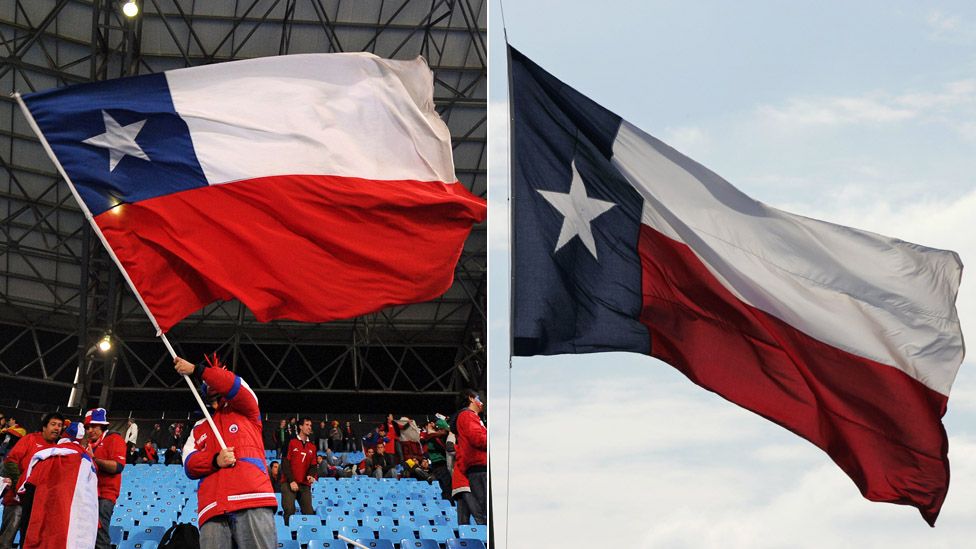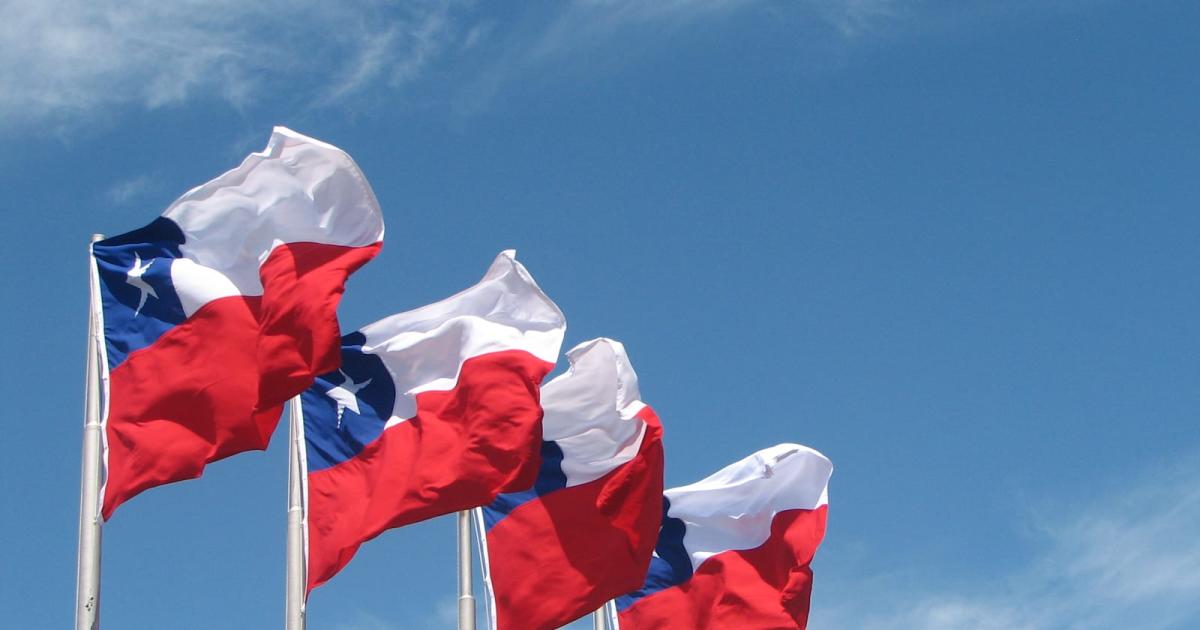Chile, with its numerous landscapes and natural treasures, surely ranks among the most stunningly gorgeous countries in South America. But aside from its breathtaking scenery, the Chile flag is a striking symbol in its own right. It stands out as a remarkable reflection of the nation’s history, ideals and aspirations, with its brilliant colours and rich symbolism.
This article explores more details about the symbolic features of the Chilean flag and what makes it a very attractive sight among the world’s flags.
Table of Content hide 1 What is the Chile flag? 2 Chile flag history 3 Chile flag meaning 4 Chile flag coloursWhat is the Chile flag?

The Chile flag serves as a representation of the country’s history, identity and ideals. Its design is distinguished by its beautiful simplicity, consisting of two horizontal stripes of equal width that run the whole length of the flag. The upper band is pure white, while the bottom band is a stunning and vibrant red. This striking colour contrast captures the essence of Chile’s heritage and ambitions.
Chilean law allows for the public display of the flag without prior authorisation. Public buildings and private homes are required to fly the flag on specific national holidays, underscoring its role in Chilean culture and heritage.
ALSO READ: Argentina flag: Learn significance, history of the Argentine national flag
Chile flag history

The history of the Chilean flag is a fascinating journey through the country’s struggle for independence and its rich cultural heritage.
Before the formal adoption of the Chilean flag, there were several flags and emblems linked with indigenous peoples and colonial forces. Mapuche forces employed flags with blue, white and red parts in the early 18th century and these colours inspired the design of the Chilean flag. The Mapuche flag contained a star known as the “guelve”, which represented the bloom of the Canelo tree and the brilliant star of Venus. This star later impacted the design of the Chilean flag, which has a single star.
The original Chilean national flag was designed during the early phases of the Chilean War of Independence. It was known as the “Flag of the Patria Vieja” or “Old Fatherland” and it featured three horizontal blue, white and yellow stripes. These stripes signified many characteristics. The Chilean coat of arms was also placed in the centre of the flag.
Following the Battle of Chacabuco in 1817, a new era known as “Patria Nueva” or “New Fatherland” started. During this period, the “Flag of the Transition” was adopted. It featured three equal horizontal blue, white, and red stripes, with the red stripe replacing the yellow from the previous flag. This flag had a brief existence and was readily confused with other flags.
The current flag was created by a group of people, including Antonio Arcos and Gregorio de Anda y Varela. It was formally established on October 18, 1817. The white five-pointed star on a blue canton (top left corner) distinguishes this flag, while the remainder of the flag is made up of two horizontal white and red bands. The colour scheme of blue-white-red represents the longing for independence and the sacrifice of blood in the search for freedom. The star alludes to the Mapuche guelve and reflects a synthesis of European and indigenous cultures.
The flag’s size and features have been altered multiple times throughout the years, with the most recent revisions being in 1967. It is now regarded as a symbol of Chile’s history, culture, and independence.
The Chile flag has evolved over its history to represent the nation’s undying spirit and fight for freedom. It remains a symbol for the Chileans, signifying their path to independence as well as their rich cultural legacy.
ALSO READ: Puerto Rico flag: Symbol of identity and pride for Puerto Ricans
Chile flag meaning

The Chile flag is a visual story of Chile’s past, present and future. Its colours, the lone star, and historical context come together to represent freedom, unity, bravery, and the enduring spirit of the Chilean people.
Chile celebrates “Flag Day” on July 9th each year to honour the 77 soldiers who lost their lives in the 1882 Battle of La Concepción. It serves as a reminder of the flag’s importance in Chilean history and culture.
Chile flag colours
The Chilean flag consists of two horizontal bands of equal height, with white on top and red below. In the top-left corner, there is a blue square of the same height as the white band featuring a white five-pointed star at its centre. This flag was officially adopted on October 18, 1817.
Before delving into the colours that make up the Chile flag and its symbolism, it is important to explain what the star in the flag symbolises. The white star represents Venus and has cultural significance for Chile’s indigenous Mapuche people. It symbolises guidance, progress, and honour. Additionally, some interpretations suggest that it signifies Chile’s status as an independent nation.

- The blue: The blue square represents the sky and the vast Pacific Ocean that borders Chile’s western coast. It embodies the idea of freedom and the boundless opportunities that come with it.
- The white: The white stripe represents purity, honesty and unity among the people of Chile. It serves as a reminder of the importance of working together harmoniously.
- The red: The red stripe symbolises courage, valour and the sacrifices made by Chileans throughout their history, particularly during their struggle for independence. It is a testament to their determination and strength.
ALSO READ: El Salvador flag: Fascinating story behind flag of the Salvadorian people
ncG1vNJzZmivp6x7tLfAm5isoF6YvK57wqGgpZ1dm7mis44%3D